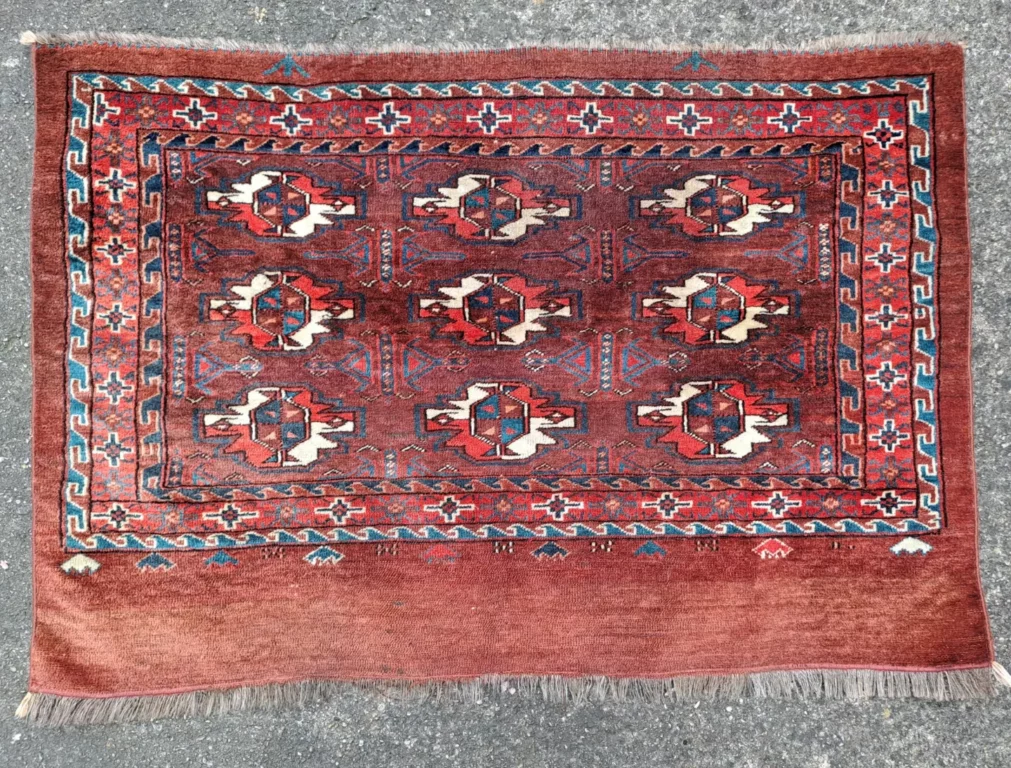Yomut Chuval
Description
This Yomut chuval, or large wall bag, dates to the third quarter of the 19th century, possibly even a bit earlier. It was made by a member of one of the major Turkoman tribes, and it is a weaving which was part of a set required for the dowry to be displayed during the wedding ceremonies.
The chuval is woven with a symmetric, or Turkish, knot and employs staggered knotting. Another technical feature is that it has cotton in the weft in some places, with the main parts of the foundation worked in the customary wool. All the colours are derived from natural dye stuffs. There are three shades of red, one orange, two shades of blue and one green, plus dark brown and undyed white, so a good range of colours.
In terms of design, the field is decorated by three columns of three main guls, with secondary guls in the spaces in between. Two minor borders feature a so-called running dog design, which is nicely pointed at the top and bottom ends. They enclose a main border on a red ground with a sequence of alternating, vaguely cruciform designs which are possibly based on florals. The elem is almost completely plain, with only one row of two patterns, an X-shape alternating with the rudiments of a tree design. Two patterns in the shape of blue arrows in the plain border at the top point at the places for the loops used for closing the bag. These are a common feature of chuvals.
A chuval of the same type, but a generation older, is published in Mackie, Louise W. & Jon Thompson, Turkmen. Tribal Carpets and Traditions. The Textile Museum, Washington, D.C. 1980, Plate 70, page 160.
The chuval has small areas of slight wear but is over all in very good condition.
SOLD

